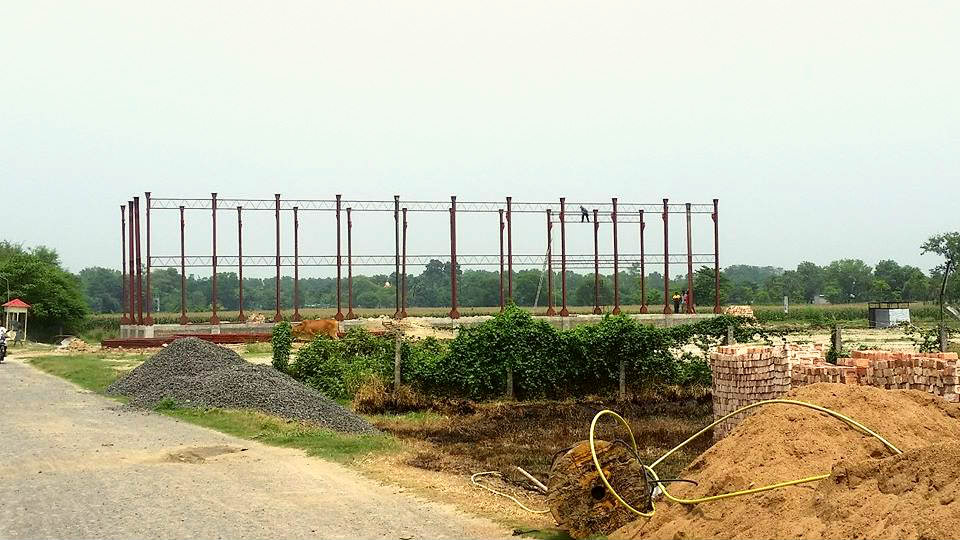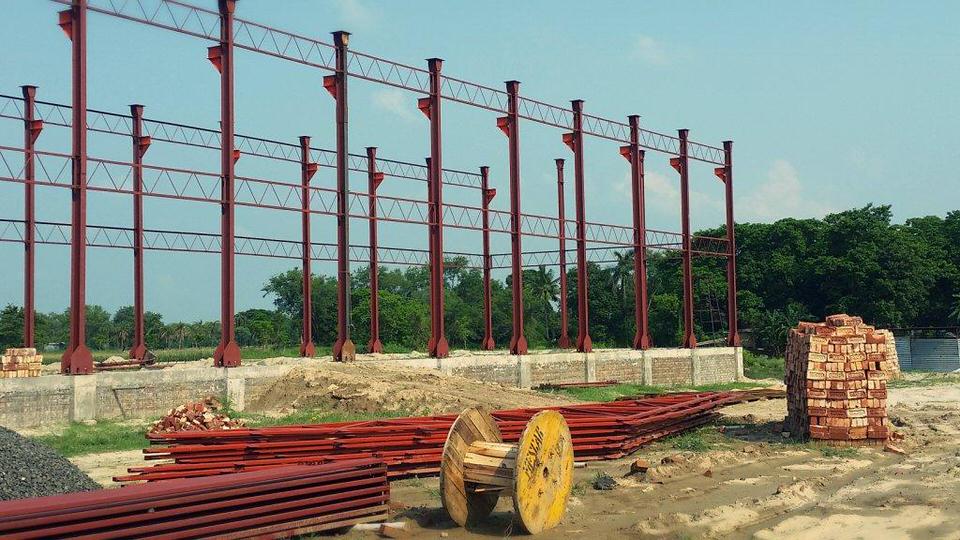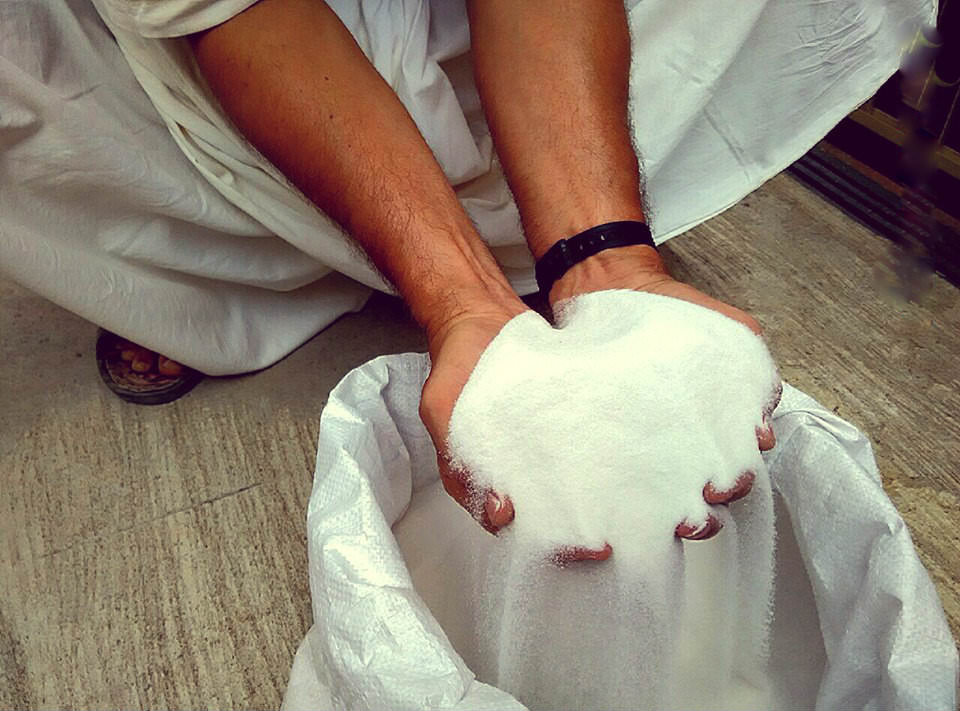GRC is an abbreviation for glass fiber-reinforced concrete, the strongest and most environmentally retardant concrete in the world. The TOVP is being constructed of this material, as well as all the architectural elements and decorative items being used on the temple.
Now underway on the ISKCON property is the construction of a dedicated GRC workshop to create all the architectural and decorative items in-house. It will be situated behind the current temple beside the Prabhupada Garden. Its size is 131 ft. (40 meters) wide, 39 ft. (12 meters) deep, and 26 ft. (8 meters) tall for a total of 5,166 sq. ft. (480 sq. meters). Part of the in-house work will require an overhead crane which is arriving in about two weeks for this purpose.
One of the ingredients in the GRC, which arrived a few days ago, will be white sand from Rajasthan made of snow quartz grains. This will be used for the Jersey Panels, panels using this and other ingredients for the decorative/architectural items. Its pure white color will allow us to create these Jersey Panels in the clearest shade of white.
A definition of GRC is provided from Wikipedia:
Glass fiber-reinforced concrete consists of high-strength glass fiber embedded in a cementitious matrix.[1] In this form, both fibers and matrix retain their physical and chemical identities, while offering a synergism: a combination of properties that cannot be achieved with either of the components acting alone. In general, fibers are the principal load-carrying members, while the surrounding matrix keeps them in the desired locations and orientation, acting as a load transfer medium between the fibers and protecting them from environmental damage. In fact, the fibers provide reinforcement for the matrix and other useful functions in fiber-reinforced composite materials. Glass fibers can be incorporated into a matrix either in continuous or discontinuous (chopped) lengths.












